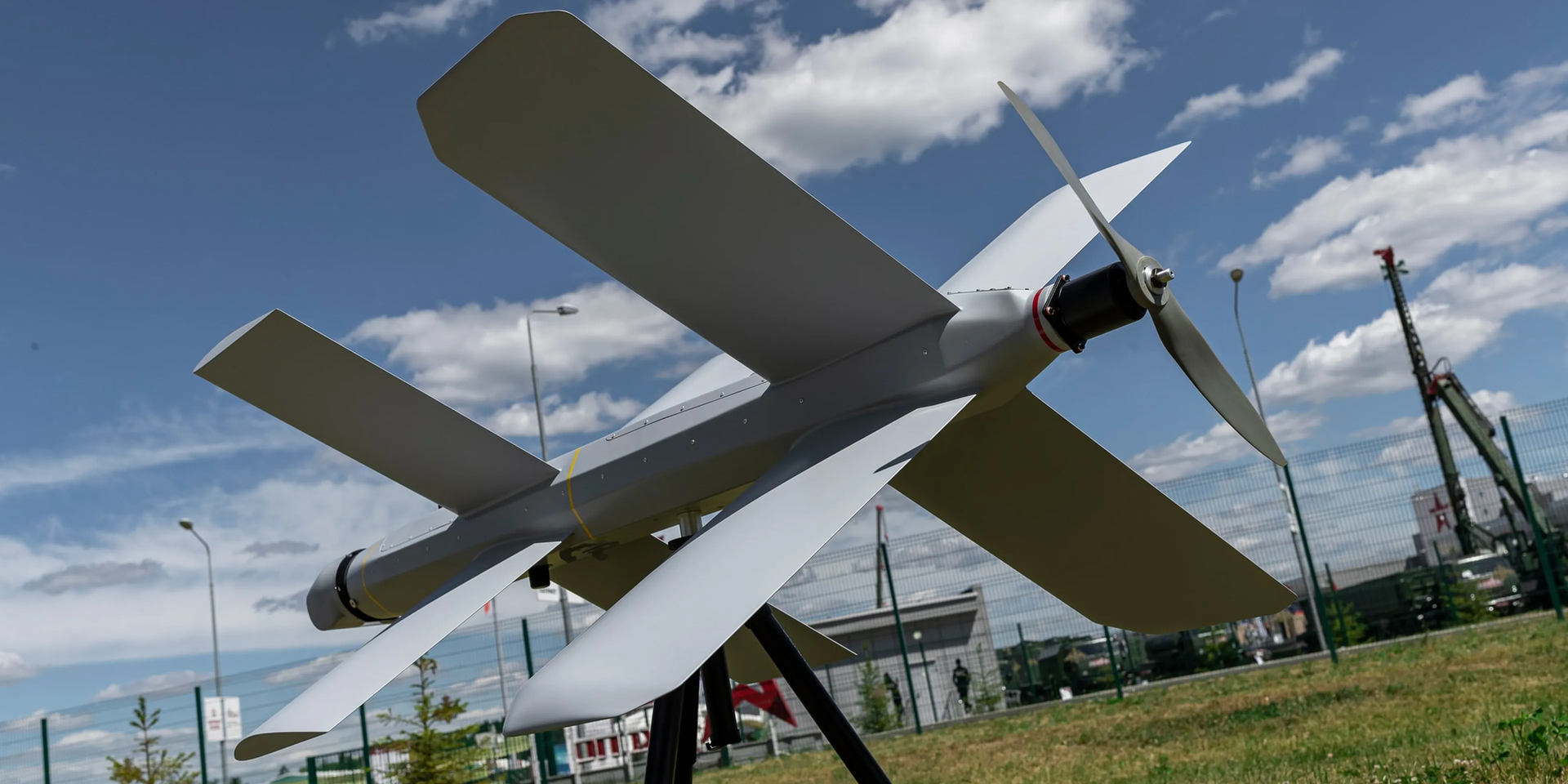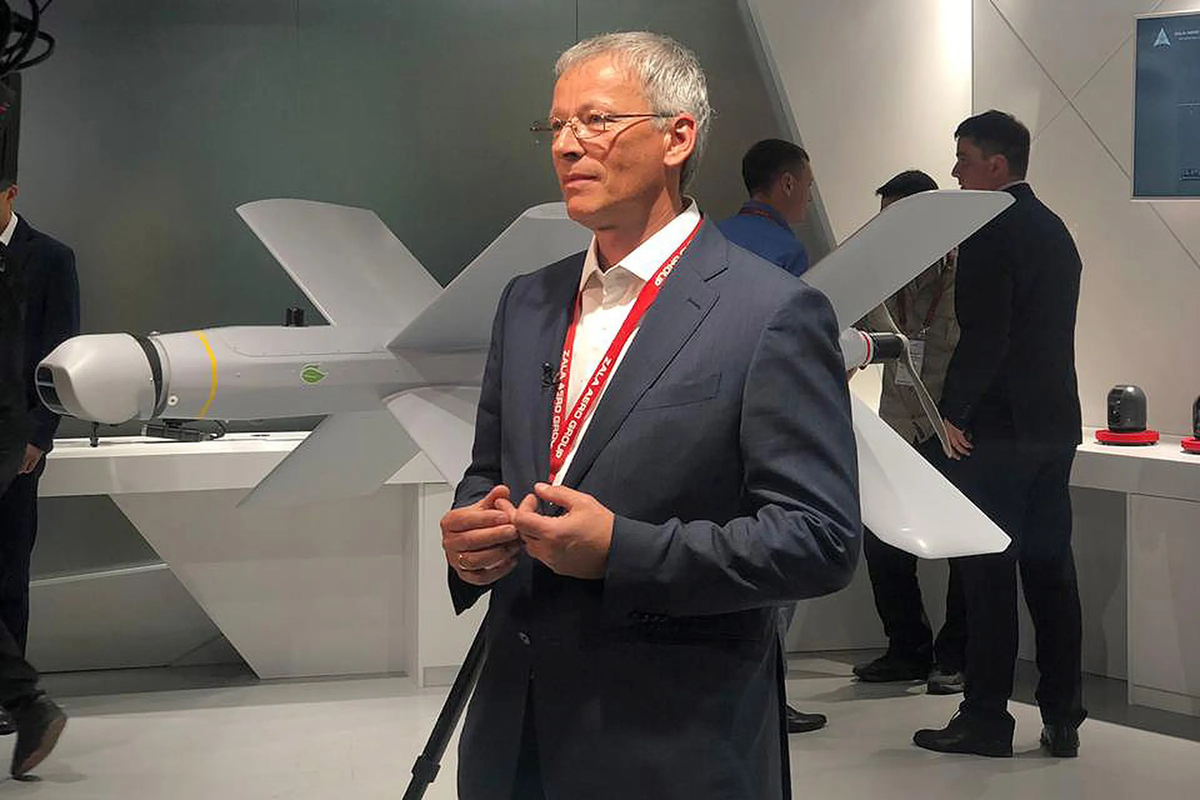Who, How and Where Buys Components for the Deadliest Suicide Drones in the Russian Army
Sanctions can’t stop Russia from importing products needed for ZALA Lancet. An investigation by IStories

Important Stories continues to tell how Russia evades sanctions: read about chip imports through Kazakhstan, about components for Orlan drones, about components for Rostec companies, and why sanctions work so awry.
“Russia still has something to cool the ardor of those who want to fight. Ukraine, for example, has been buying up Turkish Bayraktar drones. The twice as fast Russian Lancet leaves the Bayraktars no chance. This thing also mines the sky,” Russian propagandist Dmitry Kiselyov prefaced his April 2021 piece about the then little-known Lancet combat drones with such a boastful introduction. The story showed a drone crashing into a car carrying “islamic terrorists” in Syria.
The Lancet is a loitering munition — a drone whose task is to deliver a projectile to a target: a tank, a vehicle, an air defense installation, a missile cannon, a commander's office, etc. Lancets are now destroying people and equipment in Ukraine. Russian pro-war Telegram channels regularly publish reports about Lancet strikes. There is even a list of what was destroyed in Ukraine with the Lancet.
Who makes the Lancets
The Lancet drones are made by ZALA Aero Group, the main legal entity is LLC CST, established in 2010. The controlling owner with a 50.85% stake is Alexander Zakharov, the company's chief designer and creator of the Lancet drones (the rest is held by the Kalashnikov Concern).
Zakharov has been in the drone business for many years. The company's website says that its drones are bought to search for missing people, extinguish fires, monitor oil pipelines, etc. Among the clients are the Ministry of Internal Affairs, the Ministry of Emergency Situations, the Investigative Committee and state companies. Since 2011, the СST has entered into such state contracts for 3.3B rubles (≈$39.2M at the exchange rate on June 13, 2023).
But now the main buyer is the military. According to the documents at the disposal of IStories in 2022-2023 CST sold its drones to the military for 5.3B rubles, or ≈$63M (the Central Scientific Research Institute of Chemistry and Mechanics — 4.3B rubles, Central Scientific Research Institute of the Ministry of Defense and Concern Kalashnikov — 0.5B rubles each).
He’s actually sticking a big target on Izhevsk’s residential neighborhoods, which can be seen even from space
In August 2022, Alexander Zakharov suggested that shopping centers that stand empty after Western brands left should be re-equipped to produce drones. “As someone who was born and works in the city of gunsmiths [Izhevsk], I was sorrowful to see how the powerful factories built during the Soviet era were turned into shopping centers one after another. But there is a way to quickly and repeatedly increase production of drones. We have developed a concept for converting shopping centers, which before traded mostly in Western brands, into factories producing three types of domestic drones. I have long held the thought that the time will come and the industry will return to the places where we lost the factories to various offices and shopping centers in the 1990s,” explained Zakharov.
The designer's plan began to be implemented in the Izhevsk Italmas shopping and entertainment center, which was purchased for the interests of the Zakharov family. The prospect of getting the production of combat drones instead of the usual bathhouse and stores caused indignation among local residents, they even launched a petition on Change.org: “A man who tells the whole world about a top secret military enterprise is committing sabotage... He’s actually sticking a big target on Izhevsk’s residential neighborhoods, which can be seen even from space.”

Zakharov’s children, son Nikita and daughter Maria, are involved in the ZALA Aero Group business. Their companies are now the largest suppliers to CST.
Back in 2014-2015, Nikita Zakharov was deputy general director of ZALA Aero and demonstrated drones to then-Prime Minister Dmitry Medvedev. He is now the owner of Aeroscan, whose revenues skyrocketed tenfold after Russia's invasion of Ukraine, reaching 3.8B rubles (≈$45.2M) in 2022. In 2022-2023, Aeroscan has contracts with CST for 2.5B rubles (≈$29.7M).
Maria Zakharova's company named Orion also doubled its revenues to 400M rubles (≈$4.75M) in 2022, and it has contracts with CST for almost 500M rubles (≈$5.9M).
Where do the Lancet’s components come from
By some miracle, Alexander Zakharov escaped international sanctions, and only Ukraine, Australia, and the UK — but not the EU or the USA — have imposed sanctions on CST. Nevertheless, at least some of the components for the Lancets apparently fall under Western export sanctions (as, for example, in the case of other popular Russian Orlan drones). So where does CST get its components from?
There’s a whole network of suppliers who import the necessary parts to Russia from all over the world.
Thus, in addition to Aeroscan (Zakharov’s son’s company) and Orion (Zakharov’s daughter’s company), the top three companies in the total amount of supplies to CST include Novosibirsk-based OMP — in 2022-2023 it sold goods worth 1.4B rubles (≈$16.6M) to CST. OMP belongs to Maxim Kotelnikov, an employee of Aeroscan and CST (either former or current). According to customs databases, UMP is actively trading with China, buying electric motors, aluminum products, screws, bolts, nuts, etc.
Other importers supply CST with components worth tens of millions of rubles per year.
If the military requires export-controlled components, they get them. Yes, it’s difficult, but if the customers have the time, energy, and resources, there is not a problem.
The most wide-ranging geography of imports of sanctioned products to Russia is that of Hartis DV. “The decision to enter the market of radio electronic components was due to the growing sanctions pressure and the difficulties it created for Russian companies. Many years of international experience and knowledge of the specifics of working in different markets on our planet have been used to overcome these problems. We use established connections in Europe, North America and Asia to fulfill the most complex orders,” the website of Hartis DV says.
In 2022-2023, the company sold more than 50M rubles (≈$594K) worth of goods to CST and OMP. These are clearly not its main customers: during this time, Hartis DV imported goods worth 1.7B rubles (≈$20.2M).
The Moscow-based ID Solutions sold products worth 60.4M rubles (≈$718K) to CST, and worth 95M rubles (≈$1.1M) to another CST supplier, Fotopark. “The geography of ID Solution covers several regions in Russia, Kazakhstan, the Republic of Belarus, operating production in Taiwan and mainland China, and has direct contract and partnership relations with vendors in Germany, France and India,” the company reports.
ID Solutions is owned by Igor Ievlev. On his LinkedIn page, Ievlev points out that he has created and launched several successful IT projects over 20 years. He is currently located in Dubai and is co-owner of the company Skyscraper, which develops software for the management of office spaces. His contacts include an address in Uzbekistan's capital of Tashkent and the company Mvizion. According to customs databases, Uzbek Mvizion supplied Russian ID Solutions with products worth 150M rubles (≈$1.8M) after the start of the war, including goods from American Hitech Global and Nvidia. Before the war, ID Solutions and Hitech Global traded directly.
The St. Petersburg-based Spel, owned by Pavel Snegov and Sergey Orlov, sold about 100M rubles (≈$1.2M) worth of products to CST and OMP. Spel has established supplies from several dozen European and Asian manufacturers. Spel's other clients to whom it sells components include Russian defense enterprises: Radioavionika, Testpribor, and Tactical Missiles Corporation.
Difficult but possible
On the whole, the sanctions are quite effective: so far, Russia has managed to replace only about a quarter of the imports lost because of them, the researchers say.
But they also note that microelectronics, which is used in the production of Russian weapons, is an exception — everything there is so confused that so far it’s impossible even to find relevant statistics (Russia shows an increase in imports from China, and but China shows no increase in exports, so that chips appear literally out of thin air).
“If the military or special services require export-controlled components, they usually obtain them through intermediaries. Yes, it is more difficult and costly, but if the customers have the time, energy, and resources, there is not a problem,” an export control expert from the USA admitted in an interview with IStories.